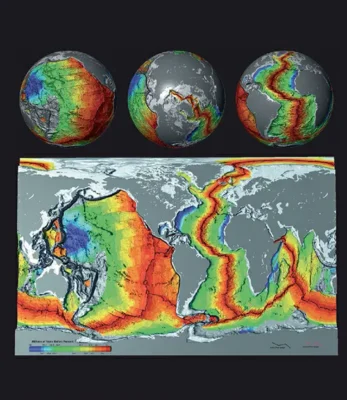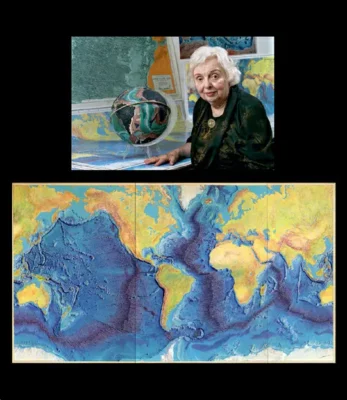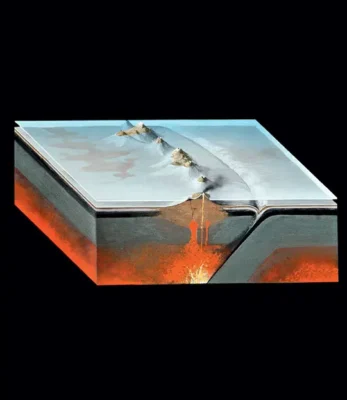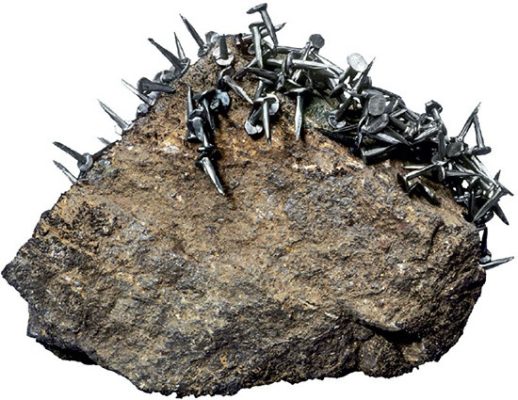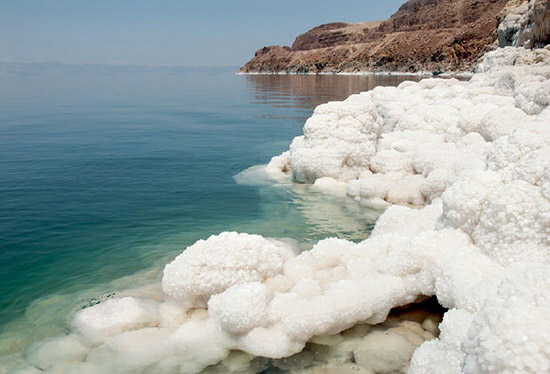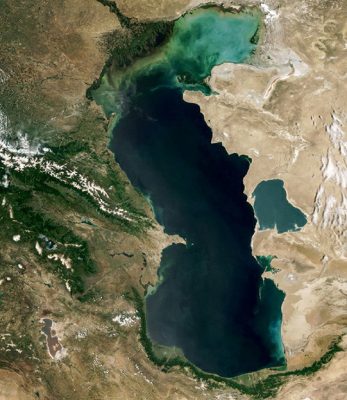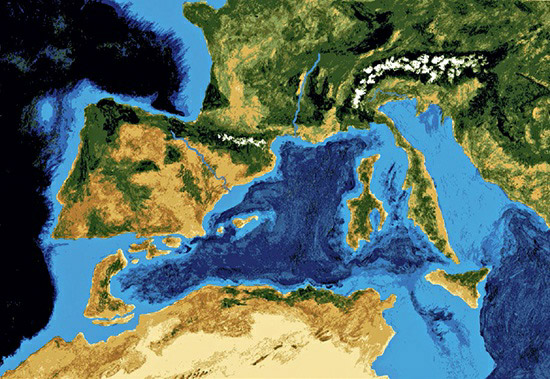Tag Archives: Plate Tectonics
~2-3 Billion: The Solidification of Earth’s Core – Future Implications
As Earth's core cools and solidifies over the next few billion years, the cessation of its magnetic field will lead to significant atmospheric and geological changes, fundamentally altering the planet's environment
~250 Million: Pangea Proxima – Envisioning Earth’s Future Supercontinent
"Pangea Proxima" explores the potential future formation of a supercontinent due to Earth's shifting tectonic plates, a continuation of the planet's dynamic geological evolution
1973: Seafloor Spreading – Tanya Atwater’s Contributions to Plate Tectonics
Tanya Atwater’s groundbreaking research in the 1970s provided key insights into seafloor spreading, contributing significantly to the understanding of plate tectonics and the geological history of Earth
1960: The 1960 Valdivia Earthquake – A Record-Breaking Seismic Event
The 1960 Valdivia Earthquake in Chile, with a moment magnitude between 9.4 and 9.6, stands as the most powerful recorded earthquake, leading to advances in seismic monitoring and tsunami predictions
1957: Marie Tharp’s Legacy – Unveiling the Mysteries of the Seafloor
Marie Tharp's pioneering work in seafloor mapping provided critical insights into ocean topography and played a crucial role in developing plate tectonics theory
1949: Uncovering Earth’s Seismic Patterns – Wadati and Benioff’s Contributions
Kiyoo Wadati and Hugo Benioff's research into deep seismic activity laid the groundwork for understanding island arcs and contributed significantly to plate tectonics theory
c. 2000 BCE: Magnetite – The Ancient and Versatile Mineral
Magnetite, an iron oxide mineral with remarkable magnetic properties, has played a pivotal role in ancient navigation, geological studies, and modern technology, reflecting its enduring significance from antiquity to present-day applications
c. 3 Million BCE: The Dead Sea – Earth’s Lowest and Saltiest Lake
The Dead Sea, situated in a rift valley created by plate interactions, is the lowest elevation lake on Earth. Hypersaline and with a history shaped by cycles of uplift and subsidence, it has minimal biodiversity [...]
c. 5.5 Million BCE: The Caspian and Black Seas – Remnants of Ancient Geography
The Caspian and Black Seas, formed from the closure of the Tethys Sea due to the collision of the African and Eurasian plates, are the largest inland lakes with unique characteristics, including salinity and anoxic [...]
c. 6.5 Million BCE: The Evolution of the Mediterranean Sea
The Mediterranean Sea formed from the closure of the Tethys Sea due to the collision of the African and Eurasian plates. This process led to significant volcanic activity and mountain building, followed by a drying [...]



